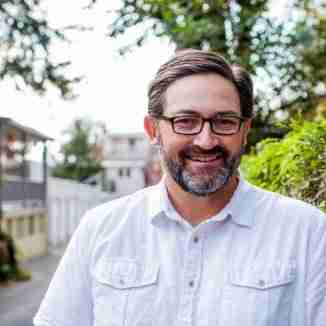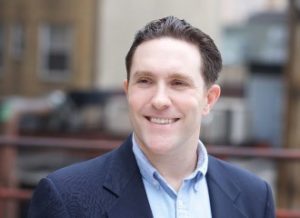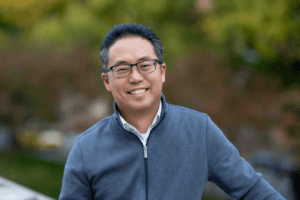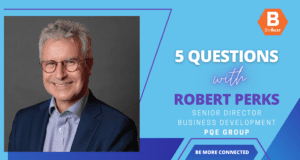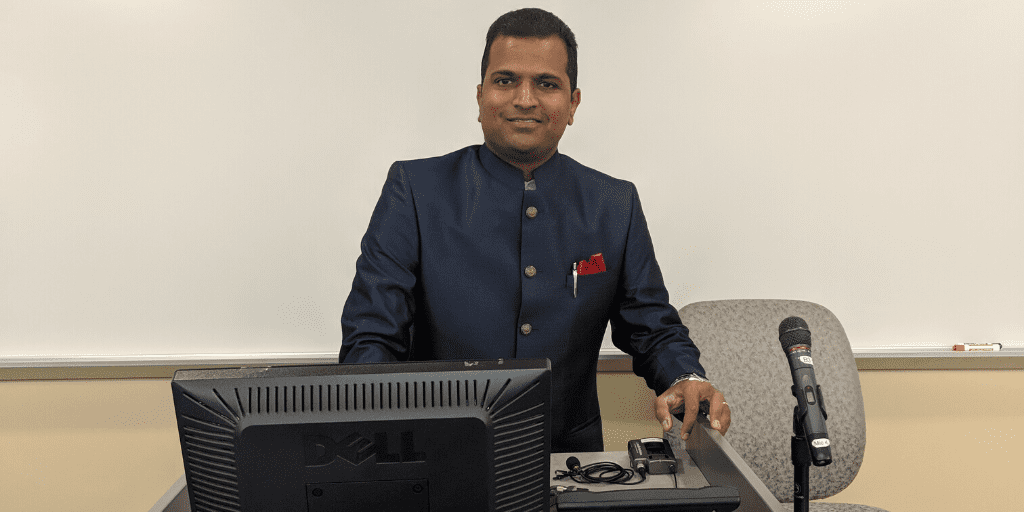
In Conversation: Dr. Harsha K. Rajasimha, IndoUSrare
BioBuzz recently sat down for a conversation with Dr. Harsha K. Rajasimha, a leading rare disease advocate, the founder of the non-profit, IndoUSrare, and the CEO of Jeeva Informatics, a leading AI and digital health company focused on decentralized clinical trials.
February is Rare Disease Month. What does this month and the awareness it creates mean to patients, families and to you?
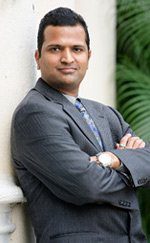
Rare Disease Month is an opportunity for patients and their families to be heard. Many rare disease patients might not see treatments in their lifetime, so their advocacy is a true illustration of hope and the altruistic nature of these families. This month is also an opportunity for the entire rare disease R&D community to be heard as well. We need rare disease advocacy to become a global village with a reach beyond the United States and Europe to Asia and Latin America. It’s critical for those dealing with and researching treatments to rise up and come together.
How did you get involved with rare disease advocacy?
I have a background in genome sequencing and data analysis and was involved 16 years ago in researching Ebola and coronaviruses. In 2012, I was a genomics data scientist doing data analysis in rare retinal diseases as a consultant to the National Eye Institute at NIH. That was my first experience with a rare disease. Then, we had a baby born with Edwards Syndrome, and my eyes were opened to the pain and suffering of families stricken with rare disease. We lost our child at 3 days old and since then I’ve been an advocate for accelerating, diagnostics, treatments, and investments to fill the unmet needs of rare disease patients.
Tell us about the nonprofit organization IndoUSrare and how people can get involved.
I ran the Organization for Rare Disease or ORDI USA for a number of years and launched IndoUSRare last year. IndoUSRare is a non-profit focused on building a bridge between the U.S. and the Indian subcontinent. The organization seeks to help patients with rare diseases of Indian origin in the U.S., India and globally with a vision to accelerate research and development of diagnostics and therapies through education, advocacy, training, research, and investments. We are actively seeking community engagement but we are in the early stages. We want to launch individual programs with sustainability in mind, but the overall goal is to educate and train patient advocates and to equip patients and families with current information on how they can be a productive participant in driving clinical research with finding a treatment being the end-goal. We want to ensure our efforts result in measurable returns for patients.
What do you see as the most important trends that are impacting the rare disease patient community?
I only see positive trends right now. One, there is a global concerted effort to tackle the diagnostic odyssey problem. Diagnostic odyssey is a phrase used to capture the long and winding journey that patients and families go through before getting a proper diagnosis. There are a number of initiatives and organizations working to address this. The average time to diagnose a patient with a rare disease is about seven years, globally. This is the fundamental problem to tackle. The goal that the international community has set is to be able to diagnose any patient that has been brought to a healthcare system’s attention within one year.
There are a number of organizations working toward this goal, including the International Rare Disease Research Consortium with origins at the NIH; the Undiagnosed Diseases Network International, also resulting from the work at the NIH; and the Global Commission to End the Diagnostic Odyssey for Children with Rare Disease, which is a collaboration among Microsoft, Takeda Pharmaceuticals and the European Rare Disease Society. It was a privilege to be invited to be a part of the Commission’s launch event at Microsoft headquarters at New York City in Feb 2019.
There is also Rare Diseases International (RDI), which is working with the United Nations and the World Health Organization to bring the global rare disease community together around the idea of universal health coverage and no patient left behind. These are very, very encouraging trends. It was an honor to receive travel scholarship from RDI to join the international patient advocates joint declaration at the United Nations headquarters at New York City in Feb 2019 and to take part in the 2020 annual meeting at Geneva
A key aspect of accelerating diagnosis is availability and access to patient data. A majority of the research databases are lacking data from diverse patients representative of the global population. I am excited to be a contributing member of a global rare disease patients’ data-sharing initiative called RARE-X. More details about the program will be announced by its founders this year. I am also a member of the Globalgenes Rare Global Advocacy Leadership Council and collaborate with them in engaging India and neighboring countries with our U.S. advocacy efforts.
Another positive trend is the FDA’s Patient-Focused Drug Development (PFDD). The FDA has taken a leadership role in listening to patients in R&D and this is resonating globally. For a century or so, the drug development process has not been truly patient-centric in engaging patients early. This is changing in the last few years and is only growing. The FDA has organized patient listening sessions where people can share what their unmet needs are. This is an opportunity for patients across the globe to share their voices with the regulators and sponsors.
What are some of the trends you’re seeing in the rare disease market and drug development?
Rare disease has grown as a market in the last 35 years since the Orphan Drug Act of 1983. Now, about one-third of all FDA approved drugs are precision medicines and orphan drugs. The ODA continues to be a force in providing hope for rare disease patients.
Despite all of this progress, approximately 93% of rare diseases remain without any FDA-approved drugs right now. The cell and gene therapy space provides significant hope for cures and therapies that can reverse genetic mutations, and 80% of rare diseases are genetic in origin and the majority of them are single-gene mutations. Those single-gene mutations can be reversed using gene editing via AAV and Lentiviral vectors. There are more than 900 active clinical trials currently; four have been approved by the FDA and this number is expected to grow tenfold over the next decade, which means hundreds and even thousands of genetic diseases will have new treatments in our lifetime.
What are the different challenges faced by rare disease patients in India versus the United States?
For patients living in the U.S., they are in the best place possible, however, broken and unsustainable the healthcare system might be. It’s still the best place in the world in terms of getting access to state-of-the-art treatments and diagnostic tests; if the treatments are not already available, the majority of clinical trials for novel treatments are being developed by biotechs in the U.S. and U.S. patients can gain early access.
However, awareness is a challenge; there are misconceptions in the Indian-American communities that patients are guinea pigs. IndoUSrare helps to break down this misperception through education, informing the community and busting any myths about clinical trials within the Indian-American community.
Patients living in India and highly populous eastern parts of the world don’t have the same access to these treatments and trials. We are seeking to make access more equitable; this will benefit the global community because it will improve patient recruitment for clinical trials. This will help all stakeholders involved, getting patients earlier access and getting treatments to market faster.
What role does the BHCR play in advancing awareness and new cures for rare diseases?
The BioHealth Capital Region has become a force to reckon with in recent years. I went to Virginia Tech for grad school 20 years ago and have been working in the region ever since. I don’t need to name all of the institutions of repute and scale in the area, but there is a huge amount of human capital that comes out of the institutions and universities here, which is needed given the scientific complexity of these diseases and their required interdisciplinary approaches. I think the ecosystem is strong and I see a growing pipeline in the BioHealth Capital Region.
What is your vision for the ideal rare disease diagnostic and treatment process in ten years?
I’d like to see every patient with rare disease on an approved treatment or enrolled in a clinical trial. Clinical trials should be part of the routine care options. No patient should be left without an option. There are 900 plus cell and gene therapy trials and close to 2,000 orphan drug trials. There are 7,000 plus rare diseases, which means 5,000 or 6,000 rare diseases have no treatment. This number will continue to shrink and I think over the next decade more of these diseases will have treatments and more rare disease patients will have viable options. There are a lot of positive trends right now and a lot of hope. As they say, you don’t have to predict the future if you happen to be a part of the community creating a better future for all.
- About the Author
- Latest Posts
Steve brings nearly twenty years of experience in marketing and content creation to the WorkForce Genetics team. He loves writing engaging content and working with partners, companies, and individuals to share their unique stories and showcase their work. Steve holds a BA in English from Providence College and an MA in American Literature from Montclair State University. He lives in Frederick, Maryland with his wife, two sons, and the family dog.


